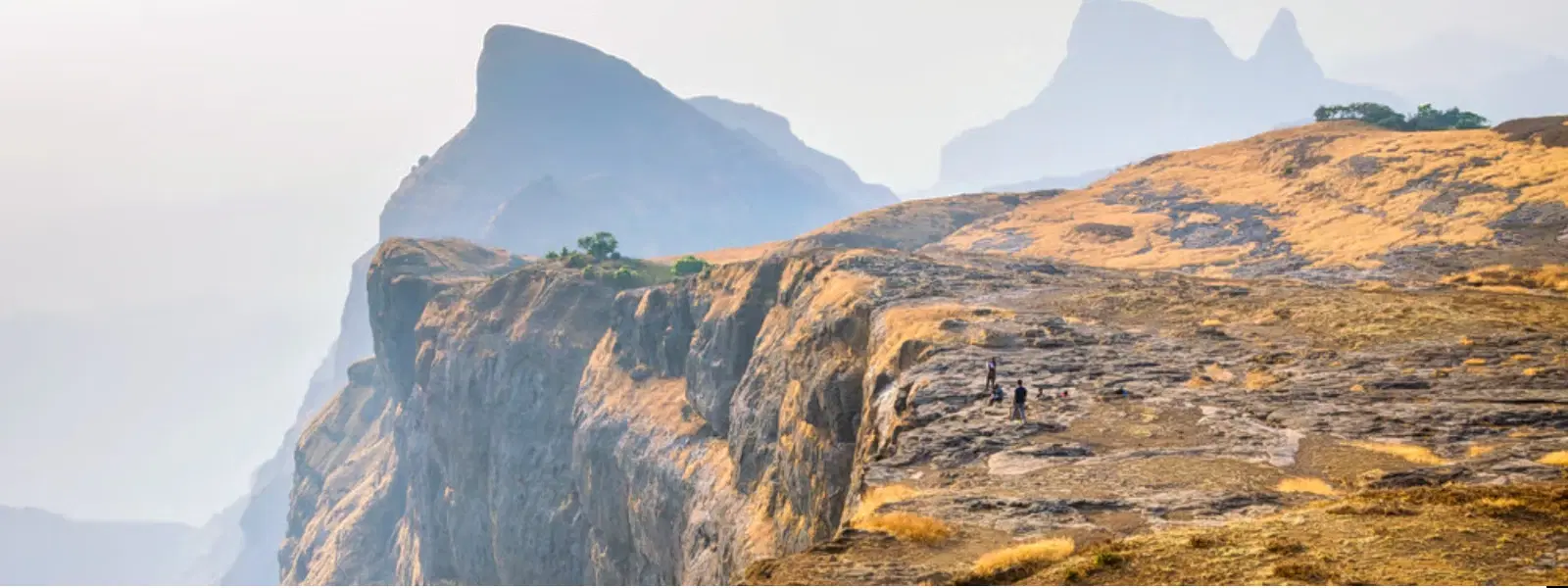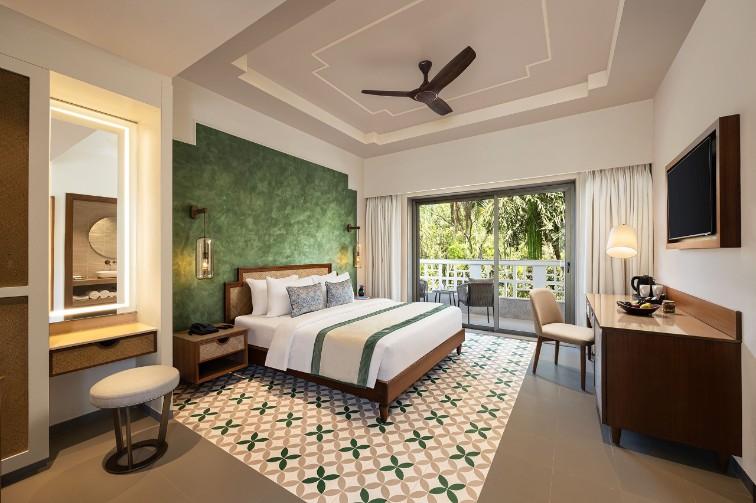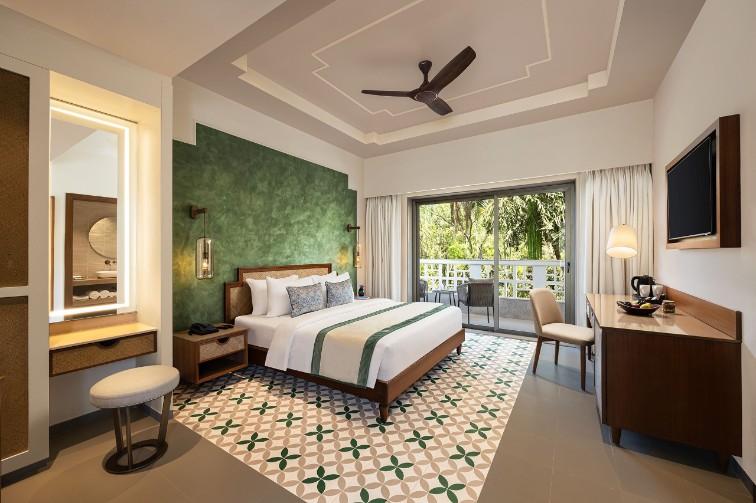
Hotels
•05 min read

Nestled in the awe-inspiring Western Ghats, Harishchandragad has become one of Maharashtra's top trekking destinations. With its enigmatic blend of history, nature, and captivating landscapes, this ancient fort captivates trekkers and history enthusiasts alike. From the mystique of its ancient caves to the majestic Konkan Kada and Taramati Peak, there is no shortage of wonders to discover. However, picking the right time for your trip is crucial to fully appreciate its charm. In this post, you'll learn about the best time to visit Harishchandragad, with insights into weather, trekking conditions, and accommodation options that will elevate your experience.
Harishchandragad is a treasure trove for those who seek adventure and history. The fort is famous for its landmarks such as Konkan Kada, offering panoramic views, Kedareshwar Cave, and the iconic Taramati Peak which cradles the first rays of the sun. Its historical significance is accentuated by the ancient Harishchandreshwar Temple and hidden caves that echo tales from centuries past. Every corner of this fort tells a story, making it a popular destination for trekkers who enjoy a mix of cultural heritage and outdoor thrills.
The experience of trekking through Harishchandragad largely depends on the weather. Seasonal variations can either enhance your adventure with clear, breathtaking vistas or pose challenges along slippery and rugged trails. Knowing the ideal season for a visit is essential for safety, comfort, and making the most of the stunning natural beauty showcased throughout the fort.
Understanding the seasonal weather conditions is key to planning a successful trip. The year can be categorized into three major seasons. The Monsoon season from June to September brings lush greenery and invigorating waterfalls but also makes the terrain slippery and challenging. Winter, spanning October to February, rewards visitors with clear skies and cool, comfortable weather, ideal for photography and long treks. Lastly, summer, from March to May, offers dry conditions with fewer crowds, ideal for those who prefer a quieter environment and expansive views across the landscape.
The Monsoon months transform Harishchandragad into a vibrant tapestry of emerald hues where waterfalls add a refreshing rhythm to the trek. However, these months are best suited for experienced trekkers who can navigate the slippery paths. Winter remains popular for its pleasant weather and clear views, making it perfect for beginners, photography enthusiasts, and those seeking a more accessible adventure. Summer, despite the rising temperatures, opens up a unique perspective with clear, distant vistas and the advantage of fewer visitors on the trails, making it easier to connect with nature undisturbed.

For trekking enthusiasts, the period from July to September during the monsoon season is a special time. The steady flow of rain breathes life into the landscape, creating a lush environment punctuated by cascades of water. October and November, right after the monsoon, deliver clear skies and moderate trekking conditions—ideal for exploring both the natural beauty and historical sites without the constraints of heavy rains. The winter months, from December to February, are considered the peak season for trekking. During this time, the weather is pleasant, the mornings crisp, and the views from summits such as Taramati Peak are simply breathtaking. Additionally, the early summer month of March offers a quieter atmosphere, perfect for those who prefer solitude while still enjoying excellent panoramic views.
Each selected month at Harishchandragad brings unique experiences for adventurers. In the monsoon season, the fort’s surroundings burst with life as moist air nurtures vibrant foliage and flowing waterfalls. Post-monsoon months make way for clear vistas and moderate temperatures, reducing the risk of any slip-ups on the rugged terrain. Winter months, with their refreshing coolness and brightness, create ideal conditions for long treks and early morning climbs, while March provides a gateway to uninterrupted stargazing and vast landscape vistas. Safety and accessibility are the common themes that make these months the best time to visit Harishchandragad.
Pro Tip for Harishchandragad Travelers:
"Did you know that October is one of the best months to visit Harishchandragad? The post-monsoon season offers clear skies, lush greenery, and safer trekking trails, making it ideal for beginners and nature enthusiasts alike."
The trekking routes at Harishchandragad vary in difficulty to suit different skill levels. The Pachnai route is well-known for its accessibility, making it a favorite for newbies, while the challenging Nalichi Vaat requires more stamina and experience. Regardless of your chosen path, it's important to consider the trek duration, which can range from a couple of hours on easier routes to a full-day commitment on strenuous trails. Be sure to review the weather conditions and pack appropriate gear. Proper trekking shoes, waterproof clothing during the monsoon, and sturdy backpacks are all essentials to ensure your safety and comfort.
Finding the right place to stay is integral for a stress-free trip. There are several accommodation options near Harishchandragad, from well-equipped hotels and cozy homestays to adventurous camping spots. Many hotels near Harishchandragad provide essential amenities and are conveniently located to drop you near the trekking trails. Early booking is recommended, especially during peak months like winter and post-monsoon, as these tend to fill up quickly. Whether you are looking for a traditional hotel or a more intimate homestay experience, the region offers a variety of options to suit every budget and preference.

Beyond trekking and accommodation, a few practical pointers can help enhance your overall experience. Packing lightly but smartly is key; remember to include layered clothing, a hat, sunscreen, and sufficient water to keep hydrated during your trek. Consider the terrain; if you plan to explore less trodden paths, having a reliable pair of trekking poles can be beneficial. Transportation options vary, so it is advisable to plan your local travel in advance. Additionally, be mindful of preserving the natural ecology by following sustainable practices such as not littering and respecting local customs. These simple guidelines can go a long way in ensuring that your Harishchandragad trip remains as environmentally friendly as it is enjoyable.
The trek offers different difficulty levels based on the route. While Pachnai is safe and beginner-friendly, routes like Nalichi Vaat are challenging and require proper experience.
Both destinations have their unique charm. Harishchandragad combines historical allure with diverse trekking routes, making it ideal for travelers seeking both culture and nature.
The trek duration varies by route; Pachnai is generally 2-3 hours, whereas more strenuous paths like Nalichi Vaat can take 6-8 hours.
Costs vary depending on the package chosen or if you plan a self-guided trip. Guided treks are generally in the range of ₹500 to ₹2000, excluding travel and accommodation expenses.
The ideal season is from October to February when the weather is comfortable and the views are clear and unobstructed.
From the monsoon's lush backdrops and cascading waterfalls to the crisp, clear views of winter and the quieter expanses of early summer, each month at Harishchandragad provides a distinct and memorable experience. By understanding the regional climate, local trekking conditions, and accommodation options, adventurers can tailor their journeys for both safety and scenic beauty. Embrace the right time to explore this historic fort, and immerse yourself in the unique blend of natural beauty and rich heritage that makes Harishchandragad a treasure in the Western Ghats.